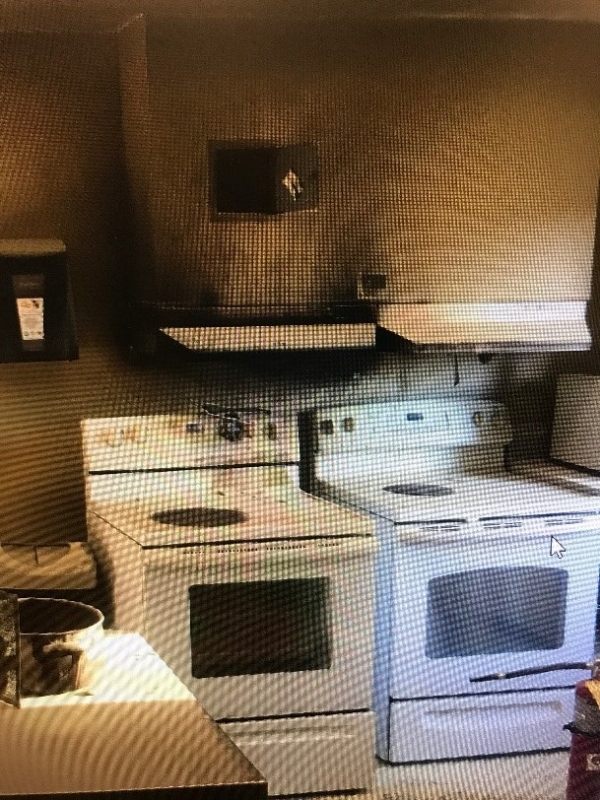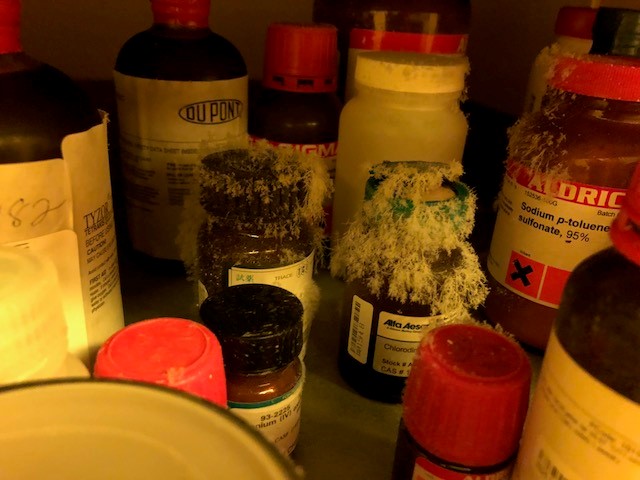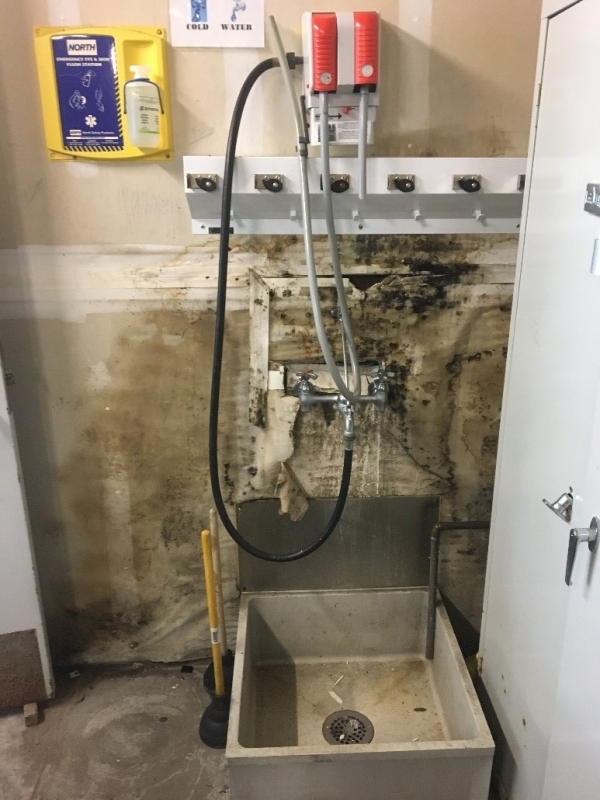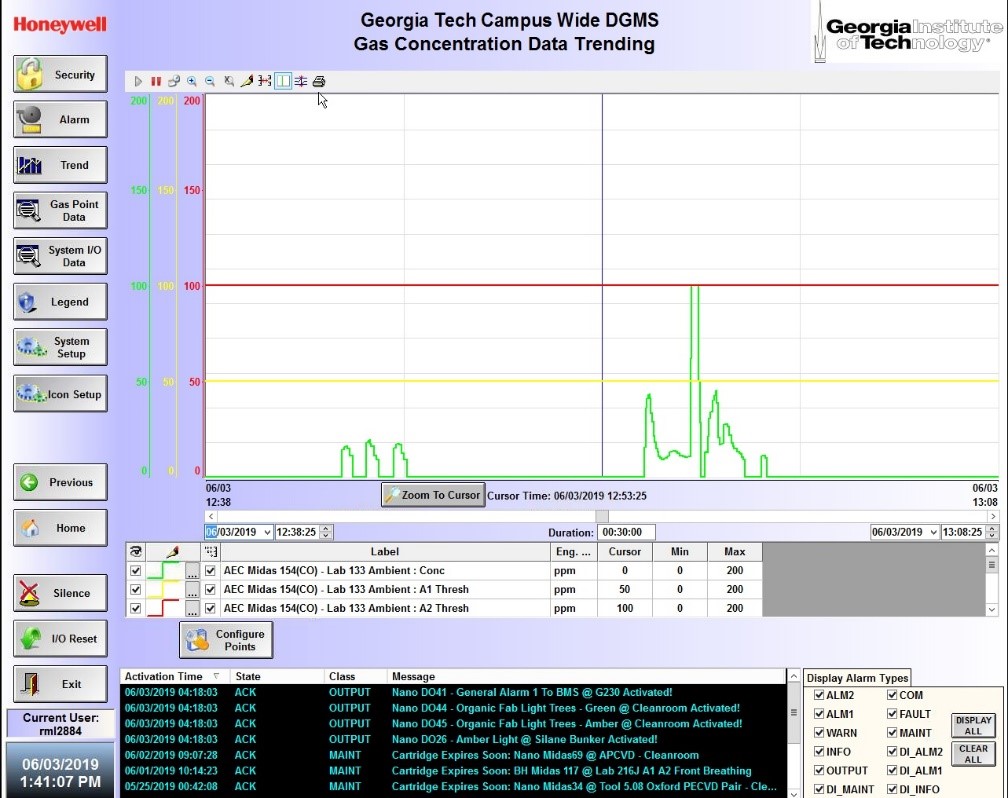A very critical part of EHS Institute responsibilities is to respond to emergencies or exposure incidents. We have a dedicated EHS Emergency phone to ensure a timely response. The Emergency phone is rotated through our EHS managers who either respond onsite or provide guidance over the phone to GTPD, AFR and those involved in the incident.
So far in 2019, EHS has directly responded to or conducted follow up investigations to over 90 incidents. These incidents ranged from electric shock to fires to chemical exposures to mold and, of course, fox bites!
All incidents are logged in a database with root causes, corrective actions and what EHS could do to prevent a similar incident from occurring. EHS holds monthly Incident Review meetings to discuss the incidents across all EHS units. This allows us to identify trends and safety areas we need to pay more attention to.

- Fire Damage in Housing
- Chemical containers with crystallization
- Mold behind sink



- DGMS Readout with Alarm Levels and Data Trending

• Odor (14)
o Offices
o Labs
o Floor drains
• Dangerous Gas Monitoring System (12)
o Accurate reading (lab didn’t follow procedure)
o Momentary spike of level
o Erroneous alarms
• Fire alarm activation – fire/smoke (10)
o Cooking with microwave or stove
o Hot work
o Car fire
o Laser cutter
• Fire alarm/sprinkler activation – no fire (10)
o Hot work
o Dust
o Panels not working properly
o Beam detectors blocked
• Chemical exposure (9)
o Needle stick
o Undergrad chemistry lab
o Research labs
o Pesticide
• Hazmat found/dangerous hazmat (8)
o Sharps in trash
o Blood on floor
o Crystalizing/oxidizing chemicals
• Injury (7)
o Cuts to fingers/hand
o Burns
• Chemical spill/explosion (6)
o Waste overflow
o Pressure release after reaction
o Liquids in labs
• Wild animals/research with animals (6)
o Fox bites
o Cat, mouse bites
The remainder of the incidents (8) fell into the following categories:
• Slips/trips/falls (2)
• Improper disposal (1)
• Allergy/sensitization (1)
• Sewage (1)
• Asbestos (1)
• Electric shock (1)
• Mold (1)